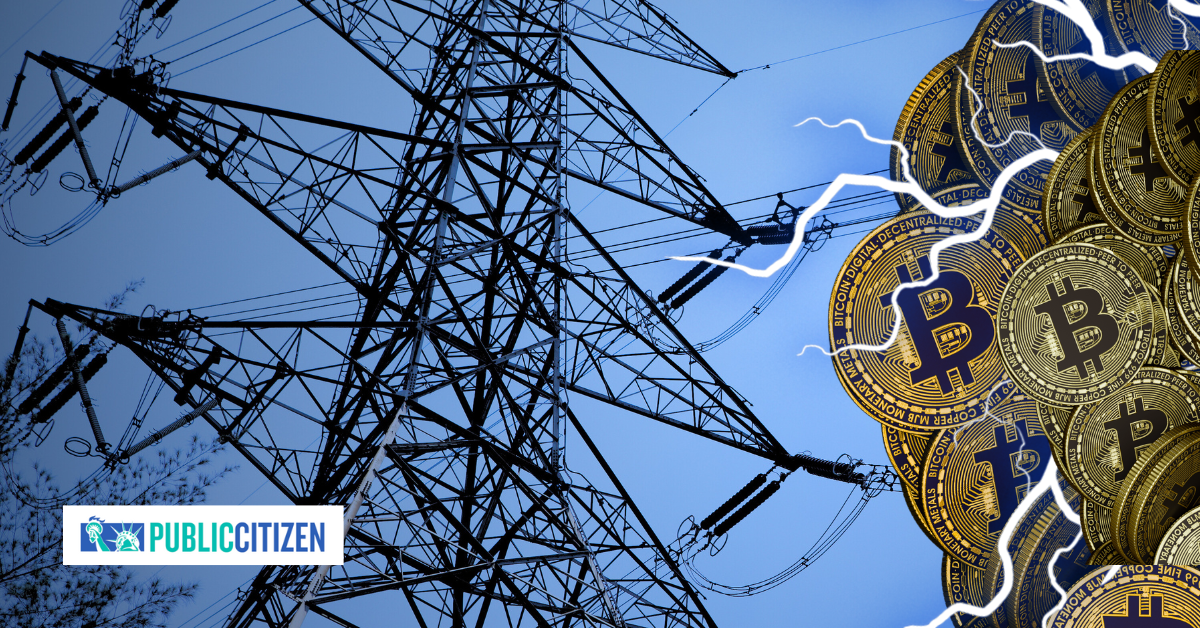[ad_1]
By José Medina
Last August, during a punishing summer heat wave, Riot Platforms was bringing in taxpayer money for essentially doing nothing.
How do Bitcoin miners make money without mining Bitcoin? It comes down to the shaky nature of the Texas electric grid. When electricity demand gets too high, we face calls for conservation or even blackouts. To avoid this, Texas’ grid operator, the Electric Reliability Council of Texas (ERCOT), pays certain customers to stop using energy when demand is high.
You and I don’t get paid when we shut off our air conditioners during summer peak hours—we do that to help out. But large industrial customers do get paid. One Bitcoin miner, Riot, was paid $31 million in August last year for not mining Bitcoin. That money ultimately comes from other ratepayers in Texas.
We learned about this because Riot said so in its monthly press release highlighting the company’s financials. Other information is harder to come by and a recent attempt at transparency that could inform policymakers on how to handle an industry that consumes enormous amounts of electricity was shut down – at least for now.
In early March, the US Department of Energy settled a lawsuit against it by Riot and the Texas Blockchain Council industry group. The suit sought to block a federal survey asking crypto miners to provide an accounting of their energy usage. The plaintiffs balked, claiming unfair industry targeting and disclosing such information would harm its business.
In a victory for miners, the Energy Department backed off, and the suit was put on pause, as was the survey.
Whatever reasons the industry has for keeping the info under wraps should not outweigh the public’s right to know. Remember, Texas is only three years removed from widespread power outages caused by frozen gas infrastructure during Winter Storm Uri. The state has had several weather-related close calls since then, including last summer. Without knowing how much energy Bitcoin miners use, policymakers are flying blind when figuring out how to best manage the Texas grid.
Some investigations have given the public an idea of how much energy the industry uses. In short, the amount is staggering.
A 2023 New York Times investigation found that the Riot facility in Rockdale, west of Austin, is the “most power-intensive” Bitcoin operation in the country. It is estimated that the facility consumes “about the same amount of electricity as the nearest 300,000 homes.” Combined with a nearby facility owned by another company, Bitdeer, the two mines consume as much power as all the households “within a 40-mile radius,” the investigation determined. The Times acknowledged their numbers are estimates. An exact accounting will remain elusive absent legislative action or industry-wide cooperation.
Greenpeace, in a new report released this month, came to similar conclusions. The group wrote: “In the United States, the seven largest crypto mining companies use the same amount of electricity needed to power every residence in Houston, which has a population of 2.3 million people.”
Cooperation is unlikely. Take the 2023 regular session of the Texas Legislature when the industry opposed Republican-led legislation that put some modest controls on miners. Despite sailing unanimously through the Texas Senate, the bill died in the House. Like the survey, the stalled legislation sought some disclosures and capped miner participation in the programs that netted Riot $31 million last August alone.
Public Citizen will make another push for transparency when the Legislature returns to Austin next January. The industry will no doubt fight any regulation. Still, it’s not going to fly with average Texans that an industry that doesn’t produce a tangible product is gobbling up electricity supplies in a state with ever-rising demand. And then, when supplies get tight and the grid risks destabilization, miners get paid to get the state out of the jam they helped create.
There are estimates that miners are driving up energy prices for everyone. According to the Times investigation, Texans paid an additional $1.8 billion on their electric bills. Again, Texans have a right to know what this industry is doing to the grid and their monthly bills.
This summer is likely to be very hot. You’ll be asked to do your part by turning down your air conditioning. If you do, you’ll get nothing more than a thank you from ERCOT.
Bitcoin miners will get tens of millions of dollars. And all they’ll be doing is taking energy demand off the grid that they put there in the first place.
They could do us a favor by shutting down for good.
José Medina is the press officer for the Texas office of Public Citizen.
[ad_2]
Disclaimer for Uncirculars, with a Touch of Personality:
While we love diving into the exciting world of crypto here at Uncirculars, remember that this post, and all our content, is purely for your information and exploration. Think of it as your crypto compass, pointing you in the right direction to do your own research and make informed decisions.
No legal, tax, investment, or financial advice should be inferred from these pixels. We’re not fortune tellers or stockbrokers, just passionate crypto enthusiasts sharing our knowledge.
And just like that rollercoaster ride in your favorite DeFi protocol, past performance isn’t a guarantee of future thrills. The value of crypto assets can be as unpredictable as a moon landing, so buckle up and do your due diligence before taking the plunge.
Ultimately, any crypto adventure you embark on is yours alone. We’re just happy to be your crypto companion, cheering you on from the sidelines (and maybe sharing some snacks along the way). So research, explore, and remember, with a little knowledge and a lot of curiosity, you can navigate the crypto cosmos like a pro!
UnCirculars – Cutting through the noise, delivering unbiased crypto news







